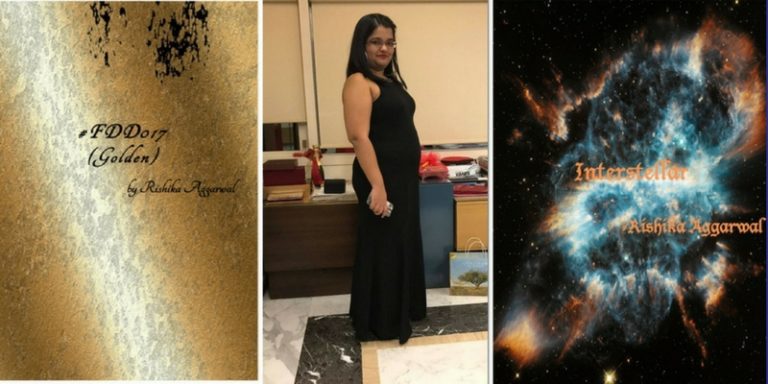It is rare for me to start a book review by sharing the background of the author, but in Neelam Saxena Chandra’s case, I believe the words are warranted, since her success while well-acknowledged within India, does not spread far beyond.
We encourage you to buy books from a local bookstore. If that is not possible, please use the links on the page and support us. Thank you.
Chandra is considered one of the most accomplished poets in the Hindi language, and a lot of her poems and stories are already taught in primary-level education. A friend from Pune even remarked that I need not review a copy of her book Lines of Fate, as her stories already sell so well!
The voice of the author
From a literary perspective, Chandra’s work Lines of Fate is built on the O Henry model of story writing. She writes simple stories from the perspective of everyday people living in metropolitan India. She is not particularly gifted at the interiority of her characters, nor is that even the focus of her writing in the first place.
Much like O Henry and Maupassant before her, the plot drives a successful Chandra story. Each development is predicated on a certain twist that nudges her characters along a machination. What makes Chandra’s stories an exception from the norm of such writing is that despite the predictable structure she writes in, Chandra subverts the expectations of her stories, and does so in a way that makes the reader feel pathos and empathy at the end of a read.
A great example of this is the opening story of the collection Lines of Fate, “First Love.” “First Love” lays out the interrelations between an aspiring painter named Bhushan, a Kabbadi player named Jagdish, and the woman they both aspire to court, Sukriti, all from Sukriti’s perspective. Based on the title and the workings of the first few pages, one expects the story to be a representation of the trials and tribulations of a love triangle. Then, Sukriti marries Bhushan, their first daughter Surili is documented with autism, and Bhushan demands that she be put up for adoption. With equally as much trepidation as firmness of mind, Sukriti walks out of the marriage with Bhushan.
“The path was unknown, but she [has] no fear. After all, she was doing everything for Surili[,] for whom Sukriti was first love.”
A story which also works within a similar structure but takes it one step further would be “The Emancipation,” a chronicle of widow Shyama as she finds out through the television that her own son has committed rape. The narrative is once again built on a scaffolding of narratives: first, we start in the present, with “Shyama [stunned] watching the television news [, as a] girl had been raped and that too very near to her house.”
Chandra enters into the whirlwind of traumas that have made Shyama who she is. We learn about her rape as a young lady by a group of young me in her neighborhood, her parent’s decision to force her into an honor marriage to an incompetent man, and all of the horrors in between. Then, we return to the present day. Shyama immediately recognizes her son Ravi as the one of the men whose sketch has been presented on the television. Her first instinct is to delete all of the messages on her phone, to think of all of the ways she can protect the honor of her son and her family. And yet, when the police come knocking at her door, she cooly confesses what she knows her son has done. The police officer himself is shocked at Shyama’s bluntness. And, yet, in her mind, she feels the following:
“Loneliness was too big a punishment to bear. But surely, it was lesser than the pangs which she would have suffered from had she not revealed the truth.”
Other gems in the collection involve a live-in relationship that becomes a marriage not from the family pressure but from the very fact the family does not support it, or a family that escaped communal religion tension by fleeing to London and opening up a bookshop, in a mirror narrative of the woman whose interactions with a bookseller inspire her to think for herself. Another story documents a random boy on a motorbike who circles a township, his motives narrated from the perspectives of all of the random people who see him. The story “Dreams Don’t Die” has some of the wisest lines in the collection. As the narrator muses,
“Childhood is the period when we are full of dreams. We jump, we fly and we soar. It is almost as if wings have been implanted on us and we are rocketing and gliding in the sky. Sometimes, we reach the stars, sometimes we talk to the moon and at other times we swing on the rainbow. And these dreams are unidirectional, that is, we learn only to aspire and hope; without even wondering there could be any stop to our flights of fantasy.”
Conclusion
Chandra is clearly a dreamer, and it is from this space of someone who truly wants to imagine a better, broader and more inclusive India that she humanizes women silenced by marriage, violence and social obligation. Chandra is not a stylist, Chandra is not an innovator, but Chandra is a storyteller, and a good one. I’d recommend Lines of Fate for those looking for the social insights and wandering prose of Joyce Carol Oates with the soothing style of Fannie Flagg, but formed, shaped, and spaced in a very different part of the world.
Favourite Quote:























